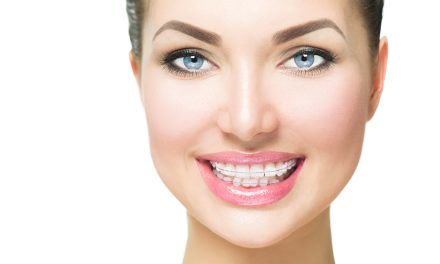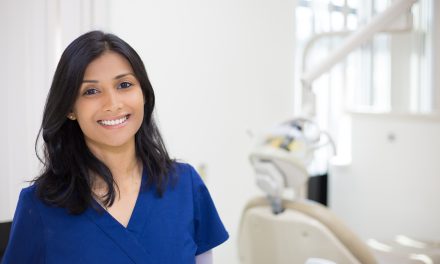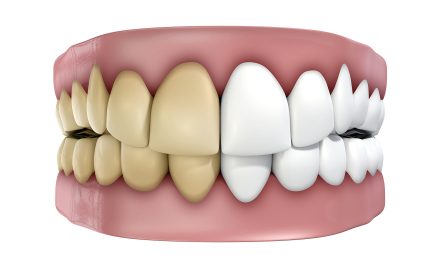Creating a foundation of dental health for young children can be a rewarding task for dentists involved in preschool education. Engaging with preschoolers allows professionals to introduce them to positive dental habits at an early age. To effectively prepare for these activities, dental professionals should focus on crafting engaging and educational experiences that resonate with young children.

Special attention should be given to designing activities that make learning about dental health fun and interactive. Incorporating games and storytelling can help capture the attention of preschoolers, making the experience both enjoyable and informative. By using these methods, dentists can encourage children to embrace healthy dental practices from the start.
Dental professionals should also consider involving parents to reinforce these habits outside the classroom. By providing them with guidance and support, they can play an active role in maintaining their children’s dental health. Establishing this partnership creates a supportive network that benefits the child’s overall well-being.
Key Takeaways
- Design activities that are engaging and educational for preschoolers.
- Use interactive methods to instill positive dental habits.
- Collaborate with parents to reinforce learning at home.
Understanding Preschoolers’ Dental Health
Understanding dental health in preschoolers is crucial for ensuring healthy habits early on and addressing common dental issues they might face. These early years set the stage for lifelong oral health.
Importance of Early Dental Habits
Preschool years are vital for building good dental habits. During this time, children learn to care for their teeth, which can prevent future problems. Introducing brushing routines can make dental care a natural part of their day. Parents often play a key role by guiding children to brush twice daily and use fluoride toothpaste. It’s also crucial to limit sugary snacks, as they contribute to cavities. Regular dental check-ups allow dentists to monitor growth and catch any issues early, ensuring a healthy smile as they grow.
Common Dental Issues in Young Children
Young children often experience dental issues like cavities, which are common due to sugary diets and improper brushing. Decay in baby teeth can affect eating and speaking and lead to pain. Thumb sucking and pacifier use can impact tooth alignment and should be minimized. Another concern is early childhood caries (ECC), which requires attention due to its prevalence among preschoolers. These issues highlight the need for professional dental care and parental awareness. Regular visits to the dentist can help diagnose problems early and guide families in maintaining oral health.
Designing Engaging Dental Health Activities
Creating dental health activities for preschoolers involves planning with clear objectives, using interactive elements, and ensuring age-appropriate content. Focus on making these activities fun and educational to keep children engaged and interested in learning about dental health.
Activity Planning and Objectives
When planning activities, setting clear objectives is key. Objectives should aim to teach preschoolers about the importance of brushing teeth, healthy eating, and regular dental check-ups. Activities might include storytelling sessions featuring dental hygiene characters or simple science experiments demonstrating cavity formation.
List of Objectives:
- Teach proper brushing techniques.
- Educate about sugary foods and their effects.
- Encourage regular visits to the dentist.
Aligning activities with these goals ensures that children not only have fun but also learn valuable lessons about oral health.
Incorporating Interactive Elements
Interactive elements make dental health activities more engaging for preschoolers. Consider using games, songs, and crafts to keep them entertained. A song about brushing teeth can make learning fun, while crafting a simple tooth model can offer hands-on experience.
Games like a tooth-themed memory match or a “sugar detective” challenge can also be effective. Involving children in these activities ensures they remain active participants rather than passive learners. This approach keeps their interest and helps reinforce the lessons taught.
Ensuring Age-Appropriate Content
Ensuring that the content is suitable for preschoolers is crucial. Activities should be simple and easy to understand, avoiding complex terms or concepts. Use bright colors, friendly characters, and engaging stories to capture their attention.
When designing content, consider their developmental stage. For example, demonstrate brushing using oversized brushes and models to make it easier for young children to follow along. Tailoring activities to their level encourages participation and helps children grasp essential dental health concepts in a fun, relatable way.
Educational Materials and Resources
When preparing preschool activities for dentists, it is essential to use effective teaching aids and engaging materials. These resources help young children learn about dental hygiene in an enjoyable and memorable way.
Selecting Appropriate Teaching Aids
Choosing the right teaching aids is crucial to capturing the interest of preschoolers. Bright, colorful models of teeth and brushing tools can be particularly effective. Interactive tools, such as large toothbrushes and model teeth, allow children to practice brushing techniques hands-on.
Additionally, consider investing in puzzles and games that focus on dental themes. These activities encourage learning through play and can help solidify the importance of oral care. Using dental puppets can add an element of fun and allow children to engage in role-play scenarios.
Providing a range of textures and shapes can also stimulate toddlers’ curiosity. For example, soft toys that mimic brushing movements can teach correct brushing habits while keeping the experience enjoyable.
Using Stories and Visuals to Teach Dental Hygiene
Stories play a pivotal role in teaching preschoolers about dental health. Books that feature characters going to the dentist or practicing good dental hygiene can be engaging for young children. Incorporating storybook sessions into dental activities makes the learning process relatable and impactful.
Visual aids like posters and charts showing the steps of brushing and flossing are also valuable. These visuals can serve as daily reminders of good dental practices.
Animated videos can provide lively demonstrations of brushing and flossing. Short clips with catchy tunes and positive messages often resonate well with children and reinforce healthy habits. Using these stories and visuals aids educators in creating an immersive and educational experience.
Hands-On Practices
Dentists can make dental health fun for preschoolers by using hands-on activities. These activities help young children learn essential skills like tooth brushing and flossing in engaging ways.
Tooth Brushing Demonstrations
Teaching preschoolers how to brush their teeth properly is crucial. Dentists can use oversized toothbrushes and models of teeth to show the correct technique. Visual aids make the process more engaging and easier to understand.
Children can practice brushing in small groups. This allows dentists to give individual feedback and correct any mistakes. Encouraging children to brush for two minutes is important. Using a timer can help them get used to the correct brushing duration. Singing a short song can also make the experience more enjoyable.
Flossing Techniques for Preschoolers
Flossing can be tricky for young children, so dentists should demonstrate the technique using large floss loops and models. By showing how to hold the floss and gently slide it between teeth, children get a clearer idea of what to do at home.
Using colorful flossers designed for children can make flossing more appealing. Preschoolers can practice flossing with supervision to ensure they are doing it correctly and safely. Encouragement and simple rewards, like stickers, can motivate them to keep up with these important habits. Teaching flossing early helps establish a healthy routine as they grow older.
Parental Involvement and Guidance
Parental involvement is key in helping children develop good dental habits. Educating parents about dental health and providing them with take-home materials can significantly enhance their ability to support their child’s oral care.
Educating Parents about Dental Health
Educating parents about dental health builds a foundation for positive oral hygiene practices in children. Parents should be informed about the importance of early dental visits and regular check-ups. Workshops and informational sessions can be organized to teach parents how to maintain their child’s dental health.
Key topics might include understanding the causes of dental caries, choosing the right toothbrush, and using fluoride toothpaste. Parents should also learn to recognize signs of dental problems and when to seek professional advice.
Interactive activities and demonstrations can engage parents and make the learning process more effective. Presenters might use models to show effective brushing techniques or explain how sugary diets impact dental health. Parents who are well-informed can better address their child’s dental needs and instill lifelong habits.
Creating Take-Home Materials
Creating take-home materials provides parents with continual support in promoting good dental hygiene at home. Materials such as brochures, checklists, and infographics can serve as handy references for parents. These documents should be clear and concise, focusing on actionable steps parents can take.
A checklist might include daily tasks such as brushing and flossing routines, while brochures could offer tips on managing diet and snacks to reduce sugar intake. Infographics are effective for visually presenting information about cavity prevention tactics.
These tools empower parents to reinforce dental education outside the classroom and serve as reminders of key points discussed in educational sessions. By having these resources readily available, parents can more effectively nurture their children’s oral health habits.
Preparing the Learning Environment
Setting up an effective learning environment for preschool dental activities involves arranging the classroom to encourage engagement and ensuring it meets safety and hygiene standards. This approach promotes a productive and fun space where children can learn about dental health.
Classroom Setup for Dental Health Activities
In a classroom designed for dental health activities, organization is essential. Desks or tables should be arranged to allow children to see demonstrations clearly. Group seating encourages interaction, making it easier for them to engage in discussions and hands-on activities.
It’s helpful to include visual aids such as posters of teeth anatomy and healthy eating habits. These can reinforce lessons taught on dental care. Dentists might also provide age-appropriate dental models and simple tools, giving children a practical experience of what happens during a dental visit.
Activity stations should be part of the setup. For example, one station can focus on brushing techniques using large, easy-to-handle toothbrushes and models. Another might allow role-playing where children can practice being a dentist or patient, fostering a better understanding of dental visits.
Maintaining a Safe and Hygienic Space
Maintaining a clean environment is vital when introducing dental concepts. All surfaces and tools should be sanitized regularly to keep germs at bay. This reduces the risk of spreading bacteria and ensures a healthy space for learning.
Safety features should be included. Protective mats or non-slip flooring can prevent accidents during interactive sessions. Sharp objects should be stored safely out of reach, and all materials used should be child-friendly and non-toxic.
Teachers and facilitators must also teach children the importance of hygiene as part of the activities. Lessons can include proper handwashing techniques, especially before and after touching any dental materials. This habit will help them understand how cleanliness plays a part in maintaining oral health.
Evaluation and Feedback
Assessing preschool activities for future dentists involves understanding learning outcomes and continuously improving based on feedback. These steps help ensure these activities are both fun and educational.
Assessing Learning Outcomes
The first step in evaluating preschool activities for dentists is to assess learning outcomes. This ensures that activities meet their educational goals. Teachers and parents should observe how well children grasp basic dental concepts. Keeping track of these observations can be helpful.
Regular assessments may include simple quizzes or engaging discussions to check understanding. Using visual aids like flashcards can reinforce learning. Monitoring how children use dental tools during activities offers another dimension of evaluation. Successful outcomes often involve children being able to explain simple dental hygiene practices.
Improving Activities Based on Feedback
Gathering feedback from both children and caregivers is crucial for improving activities. Children’s reactions—such as engagement levels and verbal feedback—provide direct insights into what works well. Caregiver observations can identify areas needing enhancement.
Adjusting activities based on this feedback allows for tailored experiences that better suit young learners. Incorporating new tools and interactive elements can make the sessions more engaging. For instance, considering feedback to include gamification can make learning more enjoyable, as suggested by research on serious games in dentistry.
Regular revisions to activities based on constructive feedback contribute to continuous improvement and ensure that preschool programs keep evolving with educational standards.
Frequently Asked Questions
Engaging preschoolers in dental health activities can be both educational and fun. Exploring sensory activities, printable resources, and interactive lessons can help children understand the importance of dental hygiene in enjoyable ways.
What are some effective sensory activities for preschoolers to learn about dental health?
Sensory activities like brushing a model of teeth with play dough “plaque” can help preschoolers understand oral hygiene. Using dental tools in play settings can introduce them to dental visits in a friendly manner.
How can I introduce the concept of dental hygiene to preschoolers?
Reading storybooks about dental visits and using toys to demonstrate brushing can make dental hygiene relatable. Role-playing with dolls can also emphasize the importance of keeping teeth clean.
What free printable dental health activities are available for preschoolers?
Websites often provide free printables like coloring pages and matching games. These can teach about toothbrushes, flossing, and healthy foods good for teeth. Incorporating these into lessons can reinforce vital concepts.
How can I entertain and educate my child about dentistry during home activities?
Creating a “dentist” play area with dental kits and puppets can engage children in pretending to be dentists. This approach combines play with learning, making the dental health topic fun and approachable.
What are some engaging counting teeth activities for preschool children?
Simple counting exercises using large tooth models and counting games with numbered tooth charts can help children learn to count while discussing decay prevention techniques.
What should be included in a preschool lesson plan on dental health?
Lesson plans could involve interactive talks about healthy dietary habits that prevent tooth decay, demonstrations on brushing and flossing, and storytelling sessions that focus on the importance of regular dental check-ups.



















